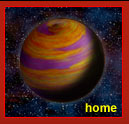The Tunguska Event: Eyewitness Account
L[avrentii] V[asil’yevich] Dzhenkoul, Strelka-Chunya Trading Post
Interviewed by G. P. Kolobkova, 1960.[1]
L. V. Dzhenkoul was born in 1904, so his personal memories of the 1908 Tunguska Event are minimal. Here he is recounting
what he was told by his father V[asilii?] I[l’ich] Dzhenkoul and uncle I[van] I[l’ich] Dzhenkoul (both long dead by
the time of Kolobkova’s 1960 interview.
In that place the seven rich Dzhenkoul brothers in those days pastured a reindeer herd of 600-700 head. The brothers were rich.
On that day, [my] father went to meet the reindeer on the Ilimpo [river] (in the north). The herd was pastured between the
Kimchu river and the Polnoty (Churgim) river. On the upper reaches of the Polnoty river there was a storehouse. There was a
second storehouse at the mouth of the Cheko. There, where the first storehouse was (on the Polnoty-Churgim), there everything
was burnt up. Of that storehouse there remained only ashes. The storehouse at the mouth of the Cheko was thrown over (carried
away) by a whirlwind. At the headwaters of the Khushmo [river] their herd was burned, the reindeer were burnt up, only ashes
remained. At the mouth of the Cheko, the reindeer lay curled up, but they didn’t burn (they had been stunned and they
died).
My uncle said: Ogdy[2] came down to earth. There was strong thunder. The weather was completely clear, there
wasn’t even any rain. Early in the morning it thundered, there were two thunderclaps: one short and strong, the second,
long. Sparks flew. A whirlwind rushed in a NW to SE direction. Such a strong whirlwind that it blew down the forest. The earth
shook. From the headwaters of the Polnoty river the forest was strewn in all directions. The choums[3] flew into the air, people fell without memory, then consciousness returned.
That year the shaman Chanchyu frightened everyone: do not go there for a whole year. Anyone who goes could die. But people went
anyway. My uncle went looking for reindeer [there] the same summer. Pieces of iron (of silvery metal) and unusual stones he did
not find, did not see — I cannot say that.
My uncle, Ivan Il’ich Dzhenkoul, worked as a guide for [L. A.] Kulik. He said that they needed to dig on the south side,
and not there where Kulik [dug]. In the southern part of the swamp there was a pit with cave-ins and the trees were stuck into
it by their tops. The pit was located in a pine forest, to the south of where Kulik was working, there where the sun sets.
Afonya Doonov and Ivan Maksimovich Dzhenkoul were there after the war[4] and saw that pit. I myself was not
there. It was they who recounted that they saw that pit at the very end of the swamp.
— translated by Bill DeSmedt
copyright (c) 2004 by amber productions, inc.
|




